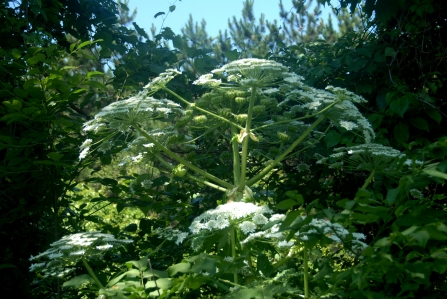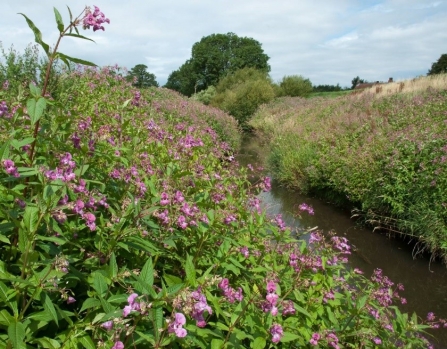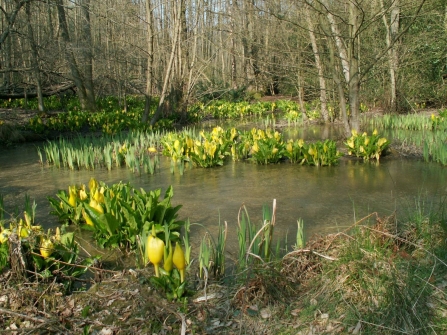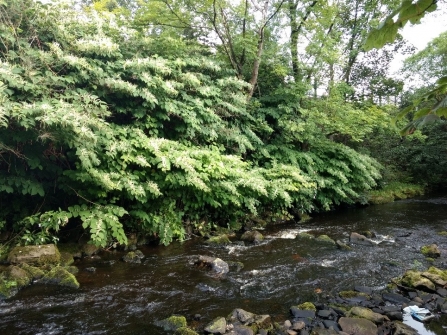Giant Hogweed
Towering at 5m tall - with serrated leaves the size of dinner plates - this is a truly imposing plant.
History - Native to the Western Caucasus Mountains in Southern Russia, it was first introduced to the UK as an ornamental plant in 1820.
Ecology - Individual plants can produce in excess of 10,000 seeds which can be transported by wind, water and humans.
Impact - Often found along riverbanks, it dies back in winter leaving large areas exposed to erosion which can contribute to flood risk.
How do we tackle it? - It must be treated with a suitable herbicide which is applied using a knapsack sprayer, or preferably to the stem using an injector for better control.
What can I do? - Keep your distance! Giant hogweed produces phytotoxic sap which can cause blistering to human skin when exposed to sunlight.





